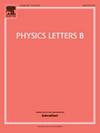Inferring the equation of state from neutron star observables via machine learning
IF 4.3
2区 物理与天体物理
Q1 ASTRONOMY & ASTROPHYSICS
引用次数: 0
Abstract
We have conducted an extensive study using a diverse set of equations of state (EoSs) to uncover strong relationships between neutron star (NS) observables and the underlying EoS parameters using symbolic regression method. These EoS models, derived from a mix of agnostic and physics-based approaches, considered neutron stars composed of nucleons, hyperons, and other exotic degrees of freedom in beta equilibrium. The maximum mass of a NS is found to be strongly correlated with the pressure and baryon density at an energy density of approximately 800 MeV.fm−3. We have also demonstrated that the EoS can be expressed as a function of radius and tidal deformability within the NS mass range 1-2. These insights offer a promising and efficient framework to decode the dense matter EoS directly from the accurate knowledge of NS observables.
利用机器学习从中子星观测数据推断状态方程
我们使用一组不同的状态方程(EoS)进行了广泛的研究,以揭示中子星(NS)观测值与潜在的EoS参数之间的强关系,并使用符号回归方法。这些EoS模型是由不可知论和基于物理的方法混合而来的,考虑了由核子、超子和其他奇异自由度组成的中子星。在能量密度约为800 MeV.fm−3时,粒子的最大质量与压力和重子密度密切相关。我们还证明了EoS可以表示为半径和NS质量范围内1-2M⊙的潮汐变形能力的函数。这些见解提供了一个有前途和有效的框架,可以直接从NS可观测值的准确知识中解码致密物质EoS。
本文章由计算机程序翻译,如有差异,请以英文原文为准。
求助全文
约1分钟内获得全文
求助全文
来源期刊

Physics Letters B
物理-物理:综合
CiteScore
9.10
自引率
6.80%
发文量
647
审稿时长
3 months
期刊介绍:
Physics Letters B ensures the rapid publication of important new results in particle physics, nuclear physics and cosmology. Specialized editors are responsible for contributions in experimental nuclear physics, theoretical nuclear physics, experimental high-energy physics, theoretical high-energy physics, and astrophysics.
 求助内容:
求助内容: 应助结果提醒方式:
应助结果提醒方式:


